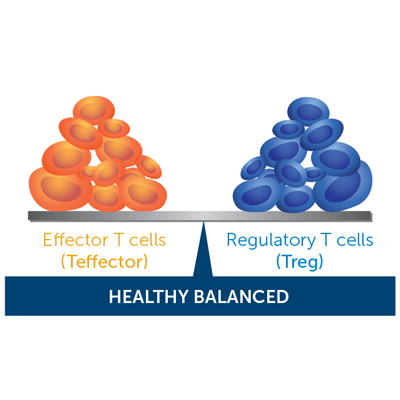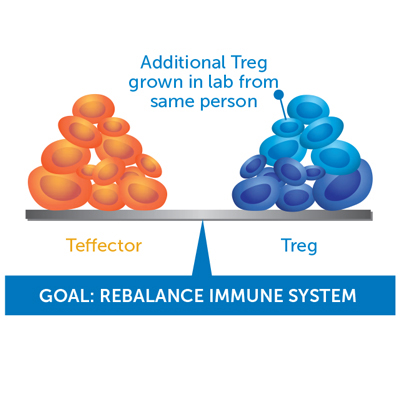The Sanford Project
Sanford Health, in collaboration with Caladrius Biosciences, Inc., is investigating whether a child’s own cells can fight type 1 diabetes. This clinical trial, known as The Sanford Project: T-Rex Study, studies an innovative investigational therapy in children newly diagnosed with type 1 diabetes. Vanderbilt is one of 15 sites participating in the trial.
Researchers focus specifically on children’s Treg cells, which may help stop the immune system’s attack on the body’s insulin-producing beta cells. The Treg cells will be collected from the participants’ blood, grown in a lab to make more of them, and returned back into their blood circulation.
Immune System Balance
Researchers are testing whether these expanded Treg cells can rebalance the immune system and stop the attack on beta cells.



Four Steps to More Tregs
Treg cells are harvested from a study participant’s blood, then multiplied in a laboratory to create an investigational treatment called CLBS03. The CLBS03 is then given back to the same patient intravenously.
STEP 1
Blood is taken from the patient

STEP 2
Treg cells are separated from blood

STEP 3
In a lab, Treg cells are grown to make more Treg cells

STEP 4
New Treg cells are returned to the patient

Trial Design
This trial is the first for this therapy in the United States to enroll adolescents. To enroll, participants must be at a minimum 8-17 years old and have been diagnosed with diabetes in approximately the last two months.

A randomized, placebo-controlled, double-blind Phase 2 trial

Includes more than 100 children across 15 sites in the United States

Could take two years or more to complete
Timeline for Trial
[dyk-carousel-summer-2017]
